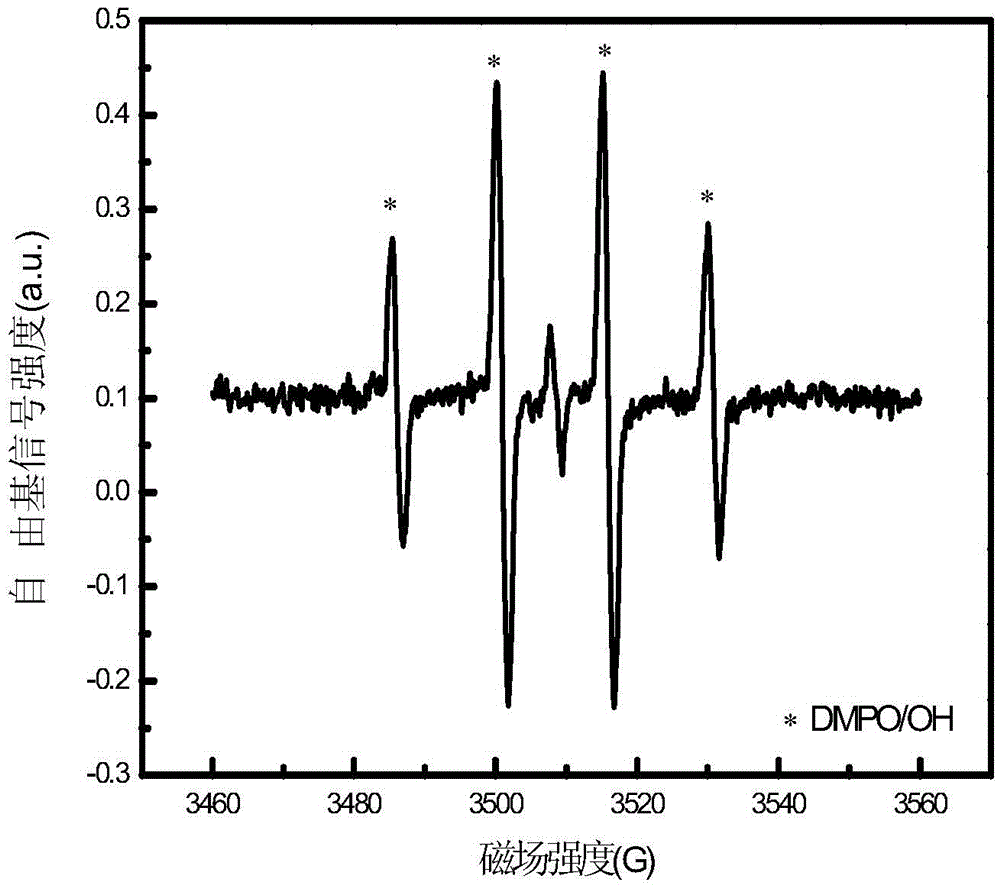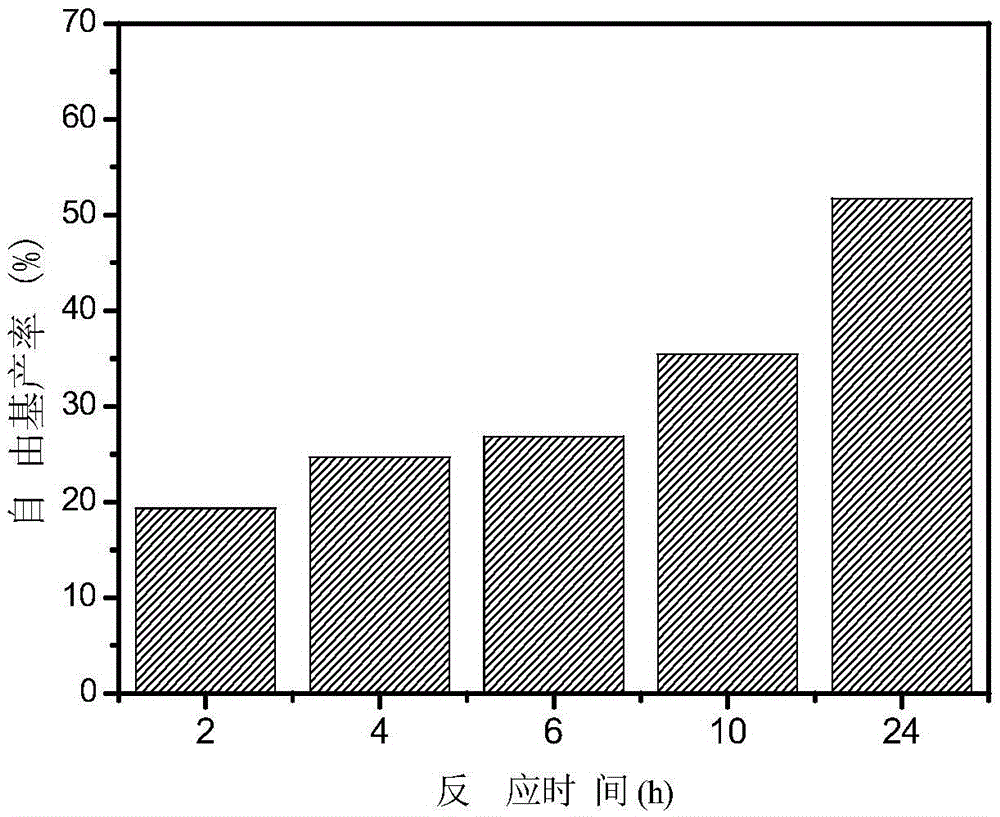Heterogeneous metal-free fenton catalyst and preparation method and purpose thereof
A metal-free, catalyst-free technology, applied in catalyst activation/preparation, non-metallic elements, chemical instruments and methods, etc., can solve problems such as low reaction cost
- Summary
- Abstract
- Description
- Claims
- Application Information
AI Technical Summary
Problems solved by technology
Method used
Image
Examples
Embodiment 1
[0062] A method for producing hydroxyl radicals, comprising the steps of:
[0063] (1) Ultrasonicate 1.5 mg / mL graphite oxide solution in water for 1 h with a power of 50 W to form a uniform graphite oxide dispersion;
[0064] (2) Chloroquinone solution is added dropwise in the graphite oxide dispersion liquid of step (1) gained, the concentration ratio of chloranil and graphene is 3:1, ultrasonic grafting 1h, ultrasonic power is 50W, obtains surface Graphite oxide dispersion liquid grafted with chlorobenzoquinone;
[0065] (3) H 2 o 2 Solution adds step (2) gained surface to be grafted in the graphite oxide dispersion liquid that has chloranil to start reaction, H 2 o 2 The concentration ratio of the concentration of the halogenated quinone to the concentration of the halogenated quinone is 5:1, and the pH of the system is adjusted to 7, and the system is stirred in a water bath at 30°C, and the stirring rate is 100r / min;
[0066] (4) When the reaction time was 2h, 4h, 6...
Embodiment 2
[0070] A method for producing hydroxyl radicals, comprising the steps of:
[0071] (1) Take 2 mg / mL of graphite oxide solution and ultrasonically put it in water for 1.5h with a power of 50W to form a uniform graphite oxide dispersion;
[0072](2) Add tetrafluorobenzoquinone solution dropwise to the graphite oxide dispersion obtained in step (1), the concentration ratio of tetrafluorobenzoquinone and graphene is 2:1, ultrasonic grafting 1h, ultrasonic power is 80W, obtain surface Graphene oxide dispersion liquid grafted with tetrafluorobenzoquinone;
[0073] (3) H 2 o 2 Solution adds step (2) gained surface and has in the graphene oxide dispersion liquid that tetrafluorobenzoquinone is grafted and starts reaction, wherein H 2 o 2 The concentration ratio to tetrafluorobenzoquinone is 2.5:1, adjust the pH of the system to 7.4, stir the system in a water bath at 25°C for 2 hours, and the stirring rate is 100r / min;
[0074] (4) After 0.5h, 1h and 2h of reaction, the reaction ...
Embodiment 3
[0077] A method for producing hydroxyl radicals, comprising the steps of:
[0078] (1) Take a 3 mg / mL activated carbon solution and ultrasonicate it in water for 2 hours with a power of 80W to form a uniform activated carbon dispersion;
[0079] (2) 2,5-dichlorobenzoquinone solution is added dropwise to the activated carbon dispersion obtained in step (1), the concentration ratio of 2,5-dichlorobenzoquinone and graphene is 3:1, ultrasonic grafting 1h, The ultrasonic power is 60W, and the activated carbon dispersion with 2,5-dichlorobenzoquinone grafted on the surface is obtained;
[0080] (3) H 2 o 2 The solution adds step (2) gained surface and has 2,5-dichlorobenzoquinone in the active carbon dispersion liquid that starts reaction, wherein, H 2 o 2 The concentration ratio to 2,5-dichlorobenzoquinone is 2:1, adjust the pH of the solution to 6.8, stir the system in a water bath at 25°C, and the stirring rate is 100r / min;
[0081] (4) When reacting for 1 hour, 3 hours and ...
PUM
 Login to View More
Login to View More Abstract
Description
Claims
Application Information
 Login to View More
Login to View More - R&D
- Intellectual Property
- Life Sciences
- Materials
- Tech Scout
- Unparalleled Data Quality
- Higher Quality Content
- 60% Fewer Hallucinations
Browse by: Latest US Patents, China's latest patents, Technical Efficacy Thesaurus, Application Domain, Technology Topic, Popular Technical Reports.
© 2025 PatSnap. All rights reserved.Legal|Privacy policy|Modern Slavery Act Transparency Statement|Sitemap|About US| Contact US: help@patsnap.com


